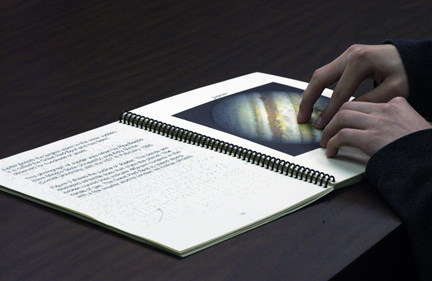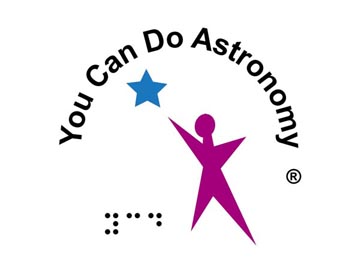
 |
TACTILE IMAGES |
Some people use their eyes to view the beauty of our world. Some people view the same beauty through their fingertips and then paint a picture of the world in their mind's eye. Noreen Grice makes the night sky accessible through tactile (touchable) celestial images. As you slide your fingers across the textures of these tactile pictures, you connect with each image both physically and emotionally.
Tactile pictures are useful for all learners, regardless of their visual ability, because touchable images provide new opportunities to meet a variety of learning styles. Noreen Grice designs astronomy tactile images so people can better connect with the cosmos, whether they are sighted or blind. Here are examples of how blind and sighted people are using Noreen's tactile science images.
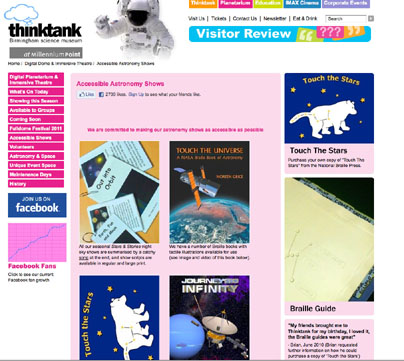
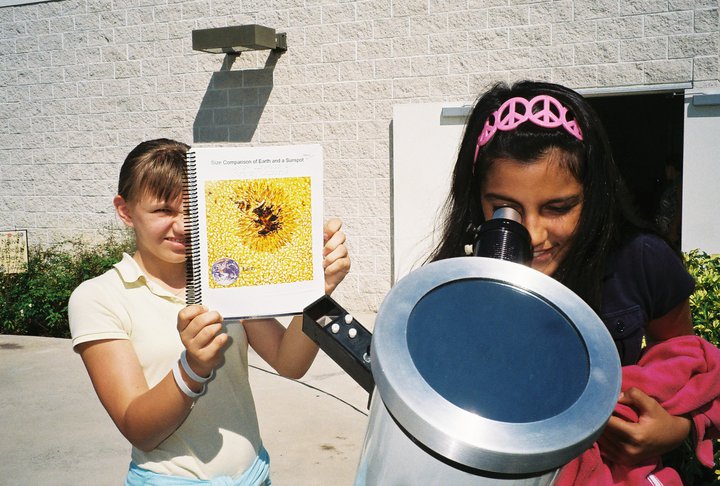
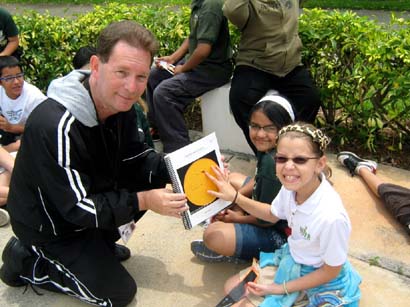
Scientists and Students Touching Tactile Carina Nebula |
|
Copies of the Tactile Carina Nebula were presented to the National Federation of the Blind on January 7, 2010.
.
Noreen Grice, Max Mutchler and Vivian Hoette present the Tactile Carina
Nebula images to Mary Jo Hartle at the National Federation of the Blind
Headquarters
Click on the link below to learn more about the Tactile Carina Nebula
Project and download an audio tour of the tactile image.
http://amazing-space.stsci.edu/tactile-carina/
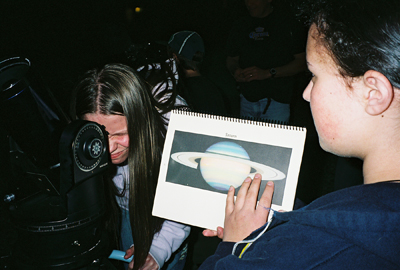
Dr. Dennis Dawson provided tactile star patterns (designed by Noreen Grice) for visitors to use during his public planetarium shows. Visitors also explored tactile images while viewing the same objects through the university telescope.
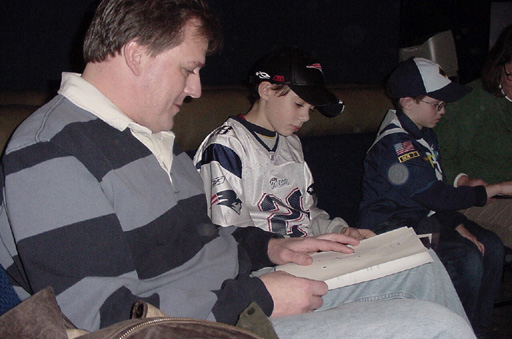 |
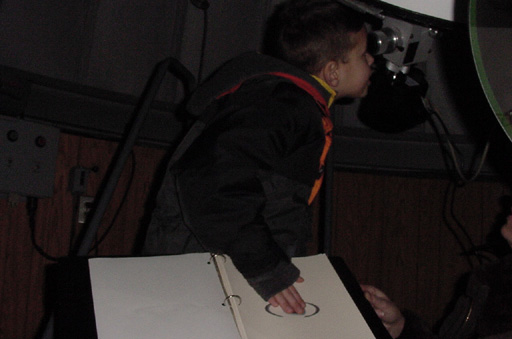 |
Visitors touch images of star patterns while listening to a live planetarium show |
A young visitor touches a tactile picture of Saturn while viewing Saturn through the telescope. |
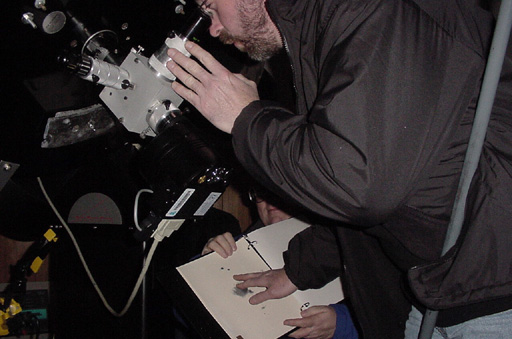 |
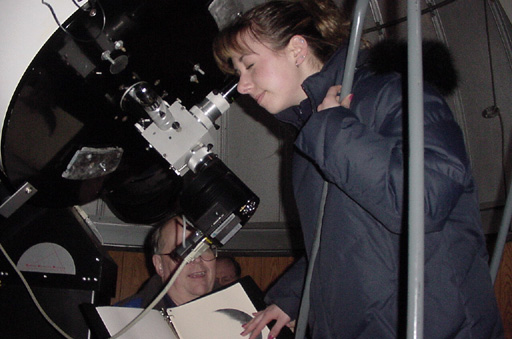 |
| A visitor touches a tactile image of the Orion Nebula while viewing it through the telescope. | A visitor touches a tactile image of the Crescent Moon while viewing it through the telescope. |
Designing useful tactile images requires thoughtful testing with visually impaired readers. Back in 1988, Noreen Grice used a Versapoint-40 Braille embosser to create astronomy-related tactile illustrations. The picture below is one of her earliest tactile images of the phases of the moon. The moon is seen orbiting the earth. Each moon phase is raised. Sunlight is shown coming from the right side of the picture. The Versapoint-40 tactile images were tested with visitors at the Boston Museum of Science.
In this prototype image of Jupiter raised, students at the Colorado School for the Deaf and Blind tested the prototype illustrations. In this image, raised curves represent gas currents and the great red spot is seen as a swirling oval.
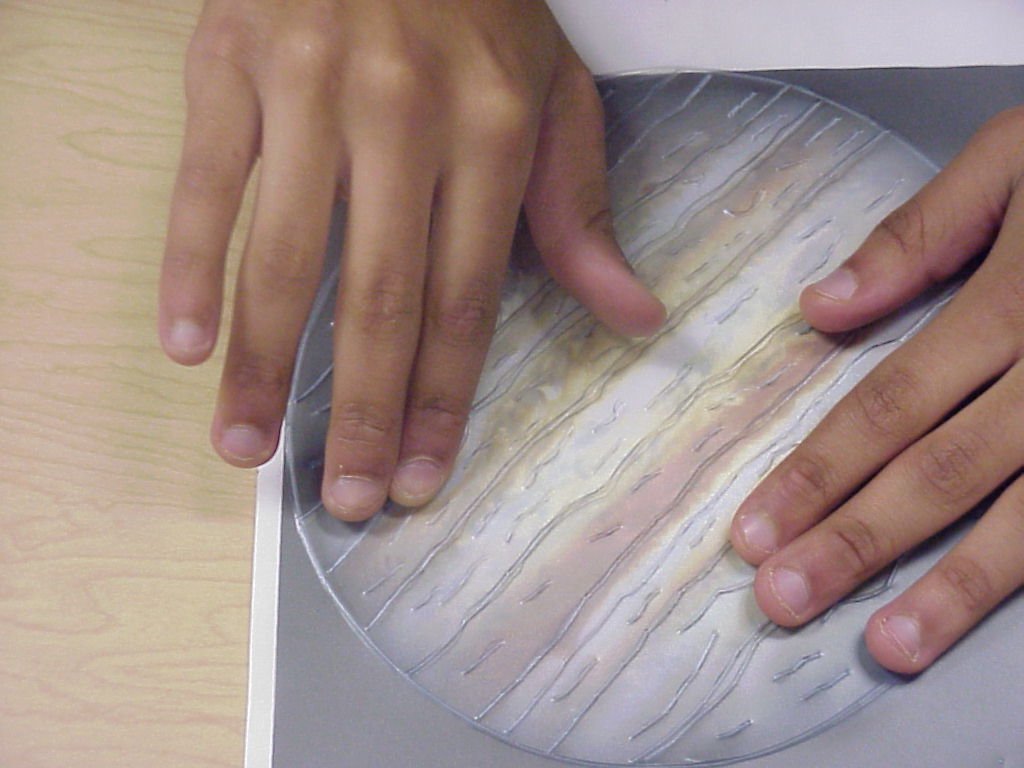
The final Jupiter tactile image from the book Touch The Universe, appears in the picture below.
